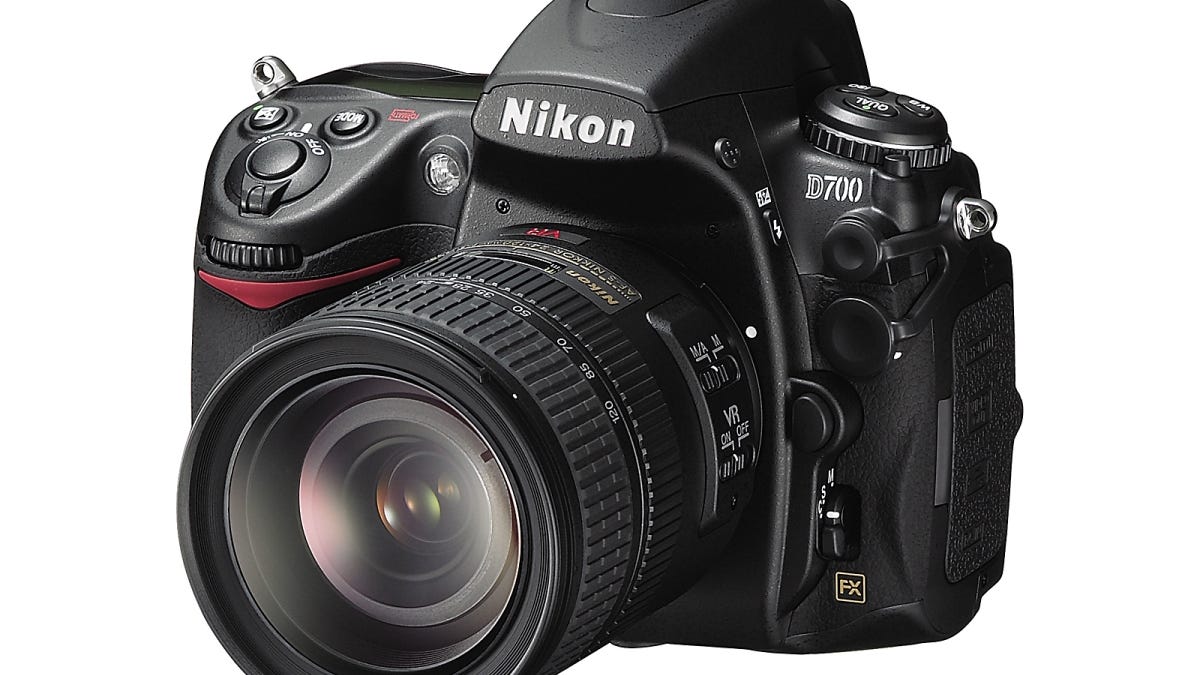Nikon debuts D700, full frame for the midrange
The little brother for the D3 provides an attractive full-frame option at a far more appealing price.

For those who don't need the indestructibility or built-in vertical grip of a traditional pro dSLR like the
Plus, their (relatively) lower prices put full-frame shooting in the hands of deep-pocketed amateur photographers. Until now, that's a party at which Nikon never got to dance. But with Monday's announcement of the full-frame D700, Nikon's a wallflower no more.
The D700 looks to be a bit of a cross between the full-frame (FX format) D3 and the DX-format
The D700 will also boast some of the durability characteristics of the D3, such as the magnesium alloy outside and dust and weather sealing. The 150,000-cycle shutter and dust prevention system come from the D300. Other features it inherits from both sides of the family include the 3-inch LCD, two live-view shooting modes, a 51-point AF system, and 3D Matrix metering technology.
A brief comparison:
| D300 | D700 | D3 | |
| Resolution | 12.3 megapixels | 12.1 megapixels | 12.1 megapixels |
| Sensor size | 23.6x15.8mm (DX) | 23.9x36mm (FX) | 23.9x36mm (FX) |
| ISO range | Native: ISO 200 to 3200 Expanded: ISO 100 (Lo-1) to ISO 6400 (Hi-1) | Native: ISO 200 to 6400 Expanded: ISO 100 (Lo-1) to 25,600 (Hi-2) | Native: ISO 200 to 6400 Expanded: ISO 100 (Lo-1) to 25,600 (Hi-2) |
| Burst shooting | 6fps (8fps with battery grip) n/a raw/100 JPEG | 5fps (8fps with battery grip) 17 raw/100 JPEG | 9fps (11fps in DX crop mode) 17 14-bit raw/64 JPEG |
| Viewfinder | 100 percent coverage 0.94x magnification | 95 percent coverage 0.72x magnification | 100 percent coverage 0.70x magnification |
| Price | $1,799.95 | $2,999.95 | $4,999.95 |
Nikon also took the opportunity to tweak some technologies and the interface. For instance, there's new automatic Active D-Lighting, which adjusts exposure while shooting rather than post-shot. (Nikon does say you'll take a performance hit with it.) The D700 will also have a built-in flash. An improved information display on the LCD now shows custom settings.
Although there seems to be lots to like about the D700--I did get to play with one for a bit while Nikon briefed us on the camera--for those who want a second body to accompany a D3 things aren't quite as rosy. Nikon lets you share picture control settings between cameras via a CF card, but some of the more prosaic features aren't quite so transparent.
For instance, the D700's viewfinder only offers 95 percent scene coverage. By itself, that's a bit disappointing, but when you have to switch between bodies, having to make that mental adjustment constantly becomes a downright nuisance. Furthermore, the body design and control layout is pure D300, which means it's completely different from the D3.
Expect the D700 to hit the stores at the end of July.
Along with the D700, Nikon also announced a pair of perspective-control lenses and a replacement for the Speedlight SB800, the SB900.
For the uninitiated, perspective-control lenses, sometimes referred to as tilt/shift lenses, allow you to photograph objects like buildings, where your angle relative to the subject causes unwanted artifacts, such as the top of a building looking very small relative to the middle. PC lenses don't come cheap, though, as the prices of the PC-E Micro NIKKOR 45mm f/2.8D ED and PC-E Micro NIKKOR 85mm f/2.8D lenses exemplify; they will be $1,799.95 and $1,739.95, respectively, when they ship in August.
The new Speedlight SB900, which will replace the
On the downside, this thing is huge. So if the SB800 looks good enough for you and size matters, I suggest you run out and get one before it disappears from the market. The SB900 will also be a bit more expensive, at least initially; the street price of the SB800 is uless than $400 now, while the SB900 is slated to list for $499.95 when it ships in August.

